 The National Agri-Marketing Association held its annual Boot Camp this week in Kansas City. One of the sessions focused on “generations” on the farm. I visited with one of those generational presenting teams, Ken and Brad McCauley, father and son Kansas farmers. The idea of the session was to learn about the challenges and rewards faced by family farmers.
The National Agri-Marketing Association held its annual Boot Camp this week in Kansas City. One of the sessions focused on “generations” on the farm. I visited with one of those generational presenting teams, Ken and Brad McCauley, father and son Kansas farmers. The idea of the session was to learn about the challenges and rewards faced by family farmers.
 After I spoke with Ken and Brad, Sara Steever, Paulsen Marketing, took her turn (photo). I think you’ll enjoy hearing this father/son team talk about working together and transitioning from one generation to another. Brad has taken an increasingly active part in managing the farm while Ken is enjoying some “down time” and being a consultant to Brad. I hope Brad’s paying a good rate for the advice. We also covered topics like information channels they depend on and social media. Brad says it’s “internet and magazines” with the internet definitely in the lead. Ken is an iPhone/iPad guy who recently bought Brad an iPad!
After I spoke with Ken and Brad, Sara Steever, Paulsen Marketing, took her turn (photo). I think you’ll enjoy hearing this father/son team talk about working together and transitioning from one generation to another. Brad has taken an increasingly active part in managing the farm while Ken is enjoying some “down time” and being a consultant to Brad. I hope Brad’s paying a good rate for the advice. We also covered topics like information channels they depend on and social media. Brad says it’s “internet and magazines” with the internet definitely in the lead. Ken is an iPhone/iPad guy who recently bought Brad an iPad!
Listen to my conversation with Ken and Brad in this week’s ZimmCast: Generations On The Farm
The ZimmCast ends this week with some music from Music Alley. It’s “Regenerations” by Ritchie Hernandez. I hope you enjoy it and thank you for listening.
Thanks to our ZimmCast sponsor, GROWMARK, locally owned, globally strong, for their support.
The ZimmCast is the official weekly podcast of AgWired. Subscribe so you can listen when and where you want. Just go to our Subscribe page.


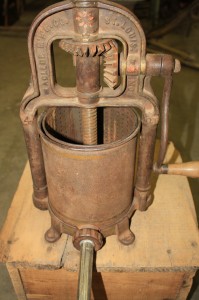
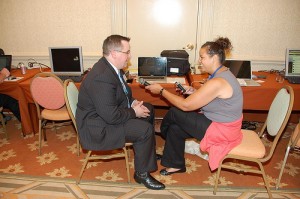
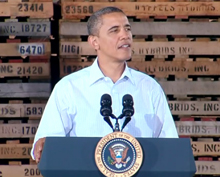 The president got a couple of serious questions about agriculture during the meeting, starting with the very first one from a local corn and soybean grower, who was applauded by the crowd for telling Obama not to challenge the nation’s food producers with more rules and regulations. “We would prefer to start our day in a tractor cab or combine cab rather than filling out forms and permits to do what we’d like to do,” he told the president, noting particular concern about regulations regarding dust and water runoff.
The president got a couple of serious questions about agriculture during the meeting, starting with the very first one from a local corn and soybean grower, who was applauded by the crowd for telling Obama not to challenge the nation’s food producers with more rules and regulations. “We would prefer to start our day in a tractor cab or combine cab rather than filling out forms and permits to do what we’d like to do,” he told the president, noting particular concern about regulations regarding dust and water runoff. 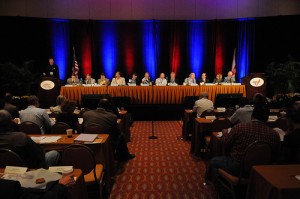
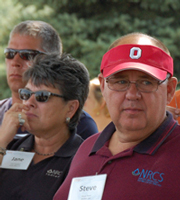 The
The 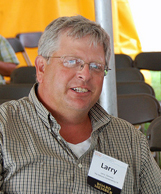 “This is by far our largest tour ever,” said tour chairman Larry Clemens of The Nature Conservancy. “I think that as CTIC we’re learning that our tours are enjoyable for people, they’re gaining in reputation, and we’re going to have to make some adjustments on how to handle over 200 people in the future.” Despite the very large group, the tour went smoothly, on time and without a hitch. Next year’s tour is slated to be in the Mississippi Delta region.
“This is by far our largest tour ever,” said tour chairman Larry Clemens of The Nature Conservancy. “I think that as CTIC we’re learning that our tours are enjoyable for people, they’re gaining in reputation, and we’re going to have to make some adjustments on how to handle over 200 people in the future.” Despite the very large group, the tour went smoothly, on time and without a hitch. Next year’s tour is slated to be in the Mississippi Delta region. A new website looks at “
A new website looks at “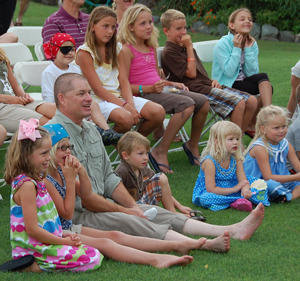 It is always a pleasure to cover the
It is always a pleasure to cover the 